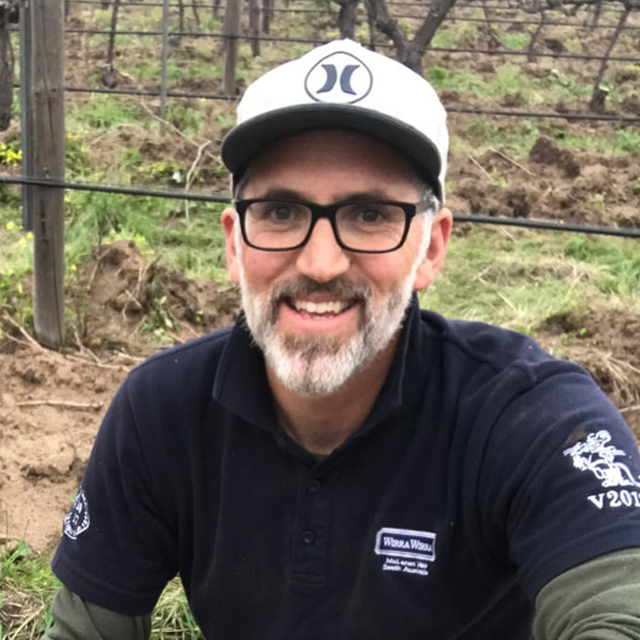1. Tell us about your experience in grape growing?
After starting in the industry operating a post knocker in McLaren Vale in the 90’s doing vineyard developments, I’ve been lucky enough to have travelled, worked or studied in most Australian wine regions since then.
After a lengthy and enjoyable stint on the Shaky Islands to our east, my wife, son, dog and I returned to McLaren Vale in 2015 to take up the role with Wirra Wirra, which more recently includes Ashton Hills.
My work has varied from boutique vineyard management to large scale corporate viticulture and grower liaison, but always with a slant towards sustainability, organic farming and building resilience into our soils and farming systems.
2. What prompted you to want to be involved in the EcoVineyards project?
The project looked like a great fit to take our management of biodiversity to the next level at Ashton Hills. We have a great site up there which already has sustainability as a focus of our management plan.
Having been aware of Mary’s work and the incubation of the EcoVineyards project, we were straight on board when we heard about it. We know there’s still a lot to learn in this area and we’re keen to offer the site, put in the work, hopefully learn something and be able to share this with others.
3. What do you hope to achieve from your involvement in the EcoVineyards project?
We’re hoping to see a further uplift in beneficial insects as well as a reduction in the number of passes required to manage our mid-row and undervine areas. Soil carbon levels is something we’re always watching, this will be an interesting measure with the new undervine species. While we think we have a good level of understanding of our own biodiversity, the further focus and monitoring will hopefully shed some light on some of our weaker areas.
4. Have you tried to increase biodiversity on your property before undertaking this project? If so, how?
We’re always attempting to tread lighter in our vineyards through smarter, softer and more minimal input approaches. Around the site at Ashton Hills we’ve stopped using herbicide in the vineyard and encouraged and maintained the biodiversity areas neighbouring the vineyard. We’re lucky with most of the vineyard being surrounded by a mix of native and exotic vegetation already.
5. Why do you think it is so important for growers to try and build natural resilience on their property?
Whether it’s because of climatic curve balls thrown our way during a season, or longer term challenges with grape growing, we’re always needing to adapt and change our approaches. Above ground we need to be committed to reducing the reliance on systemic chemicals by improving plant health or using ecosystem services. Below ground we need to ensure our soils and root systems can handle the extreme heat events and the dry seasons we’ve seen in recent times.
6. Looking to the future, what do you see as a new ‘normal’ for grape growers on their properties?
I’d love to see the old aesthetic look of vineyards lose its importance over the next few years as we begin to focus on the importance of soil carbon, vine health and ecosystem services. I’ve got no doubt that well managed vineyards with this focus will prosper in the longer term and deliver quality fruit.
READ THE CASE STUDY

